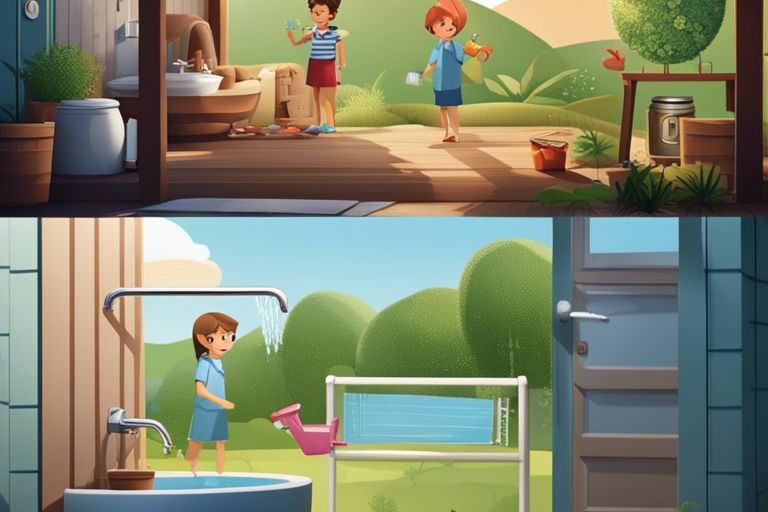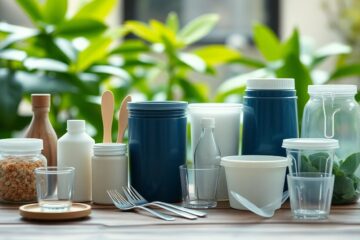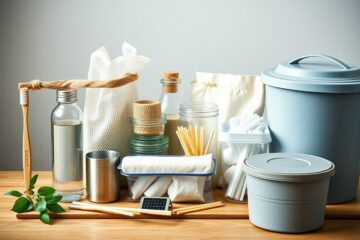Compared to other resources, water is a finite and precious commodity that we often take for granted. With climate change and population growth putting increasing strain on our water supplies, it is more important than ever for individuals to take action to reduce their water consumption. Fortunately, there are several simple and effective ways that we can all do our part to conserve water in our homes on a daily basis.
Reducing water consumption not only helps to preserve this vital resource for future generations, but it also can lead to significant cost savings for individuals and families. In this blog post, we will explore five easy and practical ways that individuals can reduce their water usage at home, providing tips and strategies that can be implemented immediately. By making these small changes, we can all play a part in protecting our water supply and creating a more sustainable future for our planet.
Table of Contents
Key Takeaways:
- Small changes make a big difference: By making simple adjustments to your daily routine, such as fixing leaks and using water-saving appliances, you can significantly reduce your household’s water consumption.
- Conservation is everyone’s responsibility: Each individual has the power to contribute to water conservation efforts at home. By being mindful of your water usage and making conscious choices, you can help preserve this valuable resource for future generations.
- Educate and inspire others: Share your knowledge and experiences with family, friends, and neighbors to encourage a culture of conservation in your community. By raising awareness and promoting water-saving practices, you can have a positive impact beyond your own household.


Understanding Your Water Footprint
The concept of a “water footprint” refers to the total volume of water used to produce the goods and services we consume. This includes the water used directly (e.g. for drinking, cooking, and bathing) as well as the water embedded in the production of food, clothing, and other items. By understanding your water footprint, you can gain insight into the impact of your daily activities and make informed decisions about where to focus your efforts in reducing water consumption.
How Water Usage is Measured
For individuals and households, water usage is typically measured in gallons or liters per person per day. This includes both indoor and outdoor water use, such as showering, flushing toilets, and watering the garden. In addition to direct water usage, it’s important to consider the virtual water embedded in the products you consume, which can be calculated based on the water used in the production process.
Identifying Key Areas for Reduction
Identifying the key areas for water reduction in your daily life is essential to making meaningful changes. This involves assessing your indoor and outdoor water usage, as well as the water footprint of the products you consume. By identifying where the majority of your water usage occurs, you can prioritize areas for reduction and focus your efforts where they will have the greatest impact.
Plus, understanding your water footprint can also help you make more sustainable purchasing decisions, such as choosing products with lower water footprints or supporting companies that prioritize water conservation in their production processes. By taking action to reduce your water footprint, you can contribute to the preservation of this vital resource for future generations.
Efficient Water Fixtures and Appliances
Your household water usage can be significantly reduced by installing efficient water fixtures and appliances. With advancements in technology, there are now various options available to help you save water without compromising on performance.
Installing Low-Flow Faucets and Showerheads
Installing low-flow faucets and showerheads can greatly reduce the amount of water used in your daily activities. These fixtures are designed to efficiently control the flow of water, allowing you to save gallons of water with every use. The installation process is relatively simple, and the benefits in terms of water conservation are substantial.
Replacing or Upgrading to High-Efficiency Toilets
The toilets in your home are one of the main sources of water usage. Replacing or upgrading to high-efficiency toilets can lead to significant water savings. High-efficiency toilets are designed to use less water per flush without sacrificing performance. This upgrade is a worthwhile investment in conserving water and reducing your household water consumption.
This simple change can lead to substantial savings on your water bills and also contribute to sustainability efforts in your community. Consider opting for a dual-flush toilet, which allows you to choose between a full flush and a partial flush, depending on your needs.
Choosing Energy Star Rated Dishwashers and Washing Machines
Any new or replacement dishwashers and washing machines should be Energy Star rated to ensure efficient water usage. These appliances are designed to minimize water waste while maintaining high performance. By selecting Energy Star rated fixtures, you can make a positive impact on the environment and reduce your water consumption at home.
Smarter Water Habits Daily
Despite the abundance of water on Earth, it is essential to develop smarter water habits in our daily lives to reduce water consumption. By making simple changes to our routines, we can make a significant impact on conserving water for future generations.
The Role of Shorter Showers and Full Loads
One of the easiest ways to conserve water is by taking shorter showers and ensuring that dishwashers and washing machines are run with full loads. By reducing shower time by just a few minutes, an individual can save a significant amount of water each day. Additionally, running appliances with full loads not only maximizes water efficiency, but also reduces energy consumption.
Fixing Leaks and Drips Promptly
Fixing leaks and drips promptly is another crucial step in reducing water wastage at home. Leaks and drips may seem insignificant, but they can result in a significant loss of water over time. Shorter, frequent inspections of faucets, pipes, and toilets can help in early detection and prevention of water wastage in the household.
Water-Saving Techniques in the Kitchen
Smarter water-saving techniques in the kitchen can contribute to reducing water consumption significantly. Simple practices, such as using a basin for washing fruits and vegetables instead of running water directly, or utilizing high-efficiency faucets and appliances, can make a substantial impact.
The implementation of these water-saving techniques not only reduces water consumption but also contributes to saving money on utility bills in the long run. By adopting these practices, individuals can play a major role in conserving water for future generations.
Sustainable Gardening and Landscaping
After addressing indoor water conservation, it’s time to turn our attention to outdoor water usage. The way we care for our gardens and landscapes can have a significant impact on our overall water consumption. By implementing sustainable gardening and landscaping practices, we can conserve water, protect the environment, and create beautiful outdoor spaces that thrive with minimal resources.
FAQ
Q: Why is it important to conserve water at home?
A: Conserving water at home is crucial for preserving our natural resources and reducing the strain on local water supplies. It also helps lower utility bills and promotes environmental sustainability.
Q: What are 5 easy ways to reduce water consumption at home?
A: Some easy ways to reduce water consumption at home include fixing leaky faucets, installing water-saving fixtures, using a dual-flush toilet, watering plants in the morning or evening, and taking shorter showers.
Q: How can fixing leaky faucets help conserve water?
A: Fixing leaky faucets can save gallons of water each day. A small, continuous drip from a faucet can waste hundreds of gallons of water per year. By fixing these leaks, you can significantly reduce water waste and promote conservation at home.
Q: What are some examples of water-saving fixtures?
A: Examples of water-saving fixtures include low-flow showerheads, faucet aerators, and efficient toilets. These fixtures are designed to reduce water usage without sacrificing performance, making them a simple and effective way to conserve water at home.
Q: Why is it important to water plants in the morning or evening?
A: Watering plants in the morning or evening helps reduce evaporation, ensuring that the water is effectively absorbed by the plants’ roots. This practice also prevents water loss due to daytime heat, ultimately promoting water efficiency in gardening and landscaping.

Our contributing author is a passionate advocate for eco-friendly living and sustainability. With a background in eco-life, they are dedicated to inspiring and empowering individuals to adopt environmentally conscious lifestyles. Through insightful articles, they share practical tips, innovative solutions, and thought-provoking perspectives to promote a greener, more sustainable world. Join them on the journey towards eco-smart living and discover how small choices can make a big impact. 🌱








